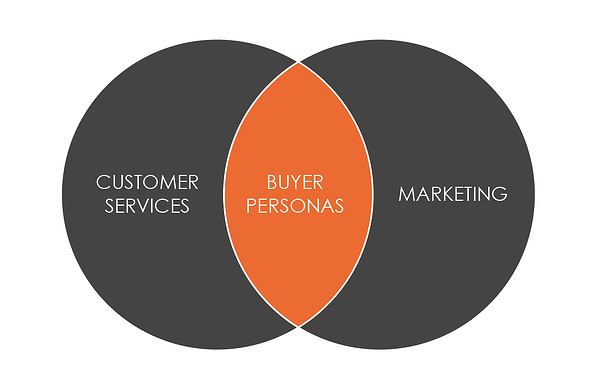
Buyer personas are one of the most effective means for maximizing your marketing budget. These hypothetical customer profiles define your target demographic and their fears, wants and desires. This enables you to more effectively personalize your marketing content, from blogs to advertisements and email drip campaigns.
When properly aligned, the persona helps you address the right audience, at the right time in the right place. But get it wrong and risk the opposite effect. So how do you know your persona is a match? Many companies conduct sales and customer surveys and market research. But there's another often overlooked resource that you can leverage today for your buyer persona development - customer service.
Whether you have a customer service team or support goes to whomever picks up the phone, these interactions are critical for refining your buyer personas. Here are some questions that your customer service department can help you figure for your buyer persona development efforts.
1. What is the Best Communication Channel?
Buyer personas help your marketing team ensure they are contacting the right audience, at the right time in the right place. Customer service is a great venue for addressing that last factor - the right place.
This can mean communities and publications where they gather, but also the communication channel they are most familiar with - whether that's helping themselves online, calling or emailing. Have your customer service team flag each interaction with the communication channel used to submit the issue. That way, you can later pull a report and mine for trends. If one of your personas primarily calls, your sales team will know that's the most effective means for connecting with that lead.
2. What is their Level of Technical Savvy?
Another very important consideration in your buyer persona development efforts is understanding your buyer persona's level of technical savvy. This is mission critical as you craft your blogs and other content. To do this, start by meeting with your customer service team to identify the most common questions they receive about your product or service.
Then, for each question, discuss what technical bucket they would fall into -- whether that's "highly technical," "general," or "basic." You could choose more macro tiers that are specific to your company, too.
3. What are their Fears, Wants, Values?
Your marketing team should work with customer service to identify other possible support behaviors that reveal buyer intent for your product, or realized fears from the pre-purchase stage.
To record and track this data, allow space either on your agent tickets or a separate document to track these "fears" "wants" or "values."
4. Does this Persona Deserve the Spend?
Customer service can also enable your marketing team to prioritize spend. The marketing team can also analyze support request volume from each persona. How often does each persona call? How long does each call last? How often do they refund? Depending on what percent of sales that persona contributes, the company might decrease marketing investments for that profile if spend exceeds customer support costs.
5. Are you Leveraging Timely Opportunities?
Customers don’t always need your product right away. Sometimes they postpone a purchase it for when a set of conditions are met, or just for “when they need it.” Customer service can help unearth these “when they need it” moments in two ways.
One, have your service team start to record how customers are using the product or service. And what is happening before and after they purchase your product. Is your product or service part of a bigger project for your customer? Customer Service can help you figure out the buying process by recording the phases of your customer’s project so that you can familiarize yourself with what are the kinds of things that your customer is experiencing before they buy, when they buy and after they buy. Then, you can look for trends on those uses.
The second way is to record calls that are relevant to a particular time of year or event. Is the purchase of your product relates heavily to your client’s annual budgeting process? Or is it influenced by some kind of seasonality? Does this vary depending on the buyer persona you are dealing with? Understanding what is timely to your consumer will help reinforce relevancy and immediacy to buy.
6. Is Your Team On Board?
In order for this checklist to work, you need to make sure your customer service team understands the persona traits and the value of refining them.
Equally important, you need to enable process and procedures for recording and tracking these buyer persona traits through customer service. This could be as simple as a physical checklist they keep at their desk with lines for “communications channel” or “Use case.” Or you could go one step further and integrate this into your issue tracking software with custom fields and reports.
Article written by Ashley Furness.
Ashley Furness is a CRM Analyst for research firm Software Advice. She has spent the last six years reporting and writing business news and strategy features. Her work has appeared in myriad publications including Inc., Upstart Business Journal, the Austin Business Journal and the North Bay Business Journal. Before joining Software Advice in 2012, she worked in sales management and advertising. She is a University of Texas graduate with a bachelor's degree in journalism.







